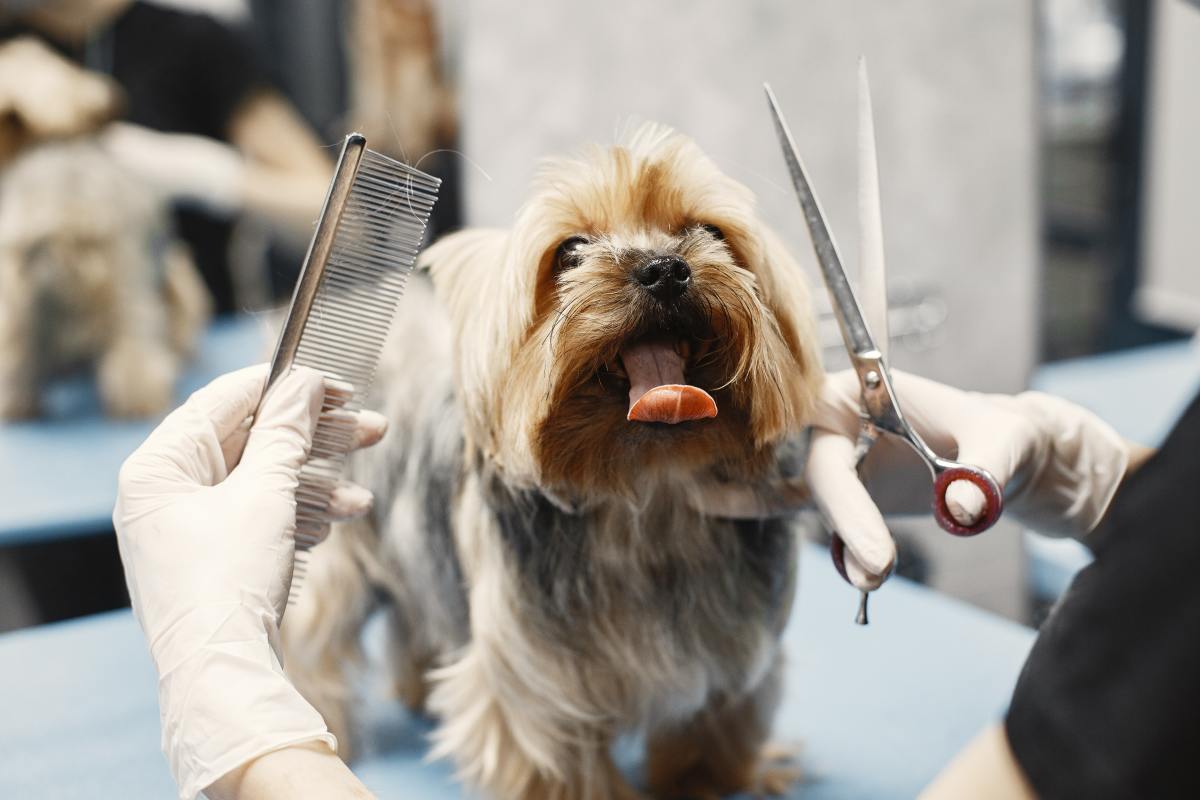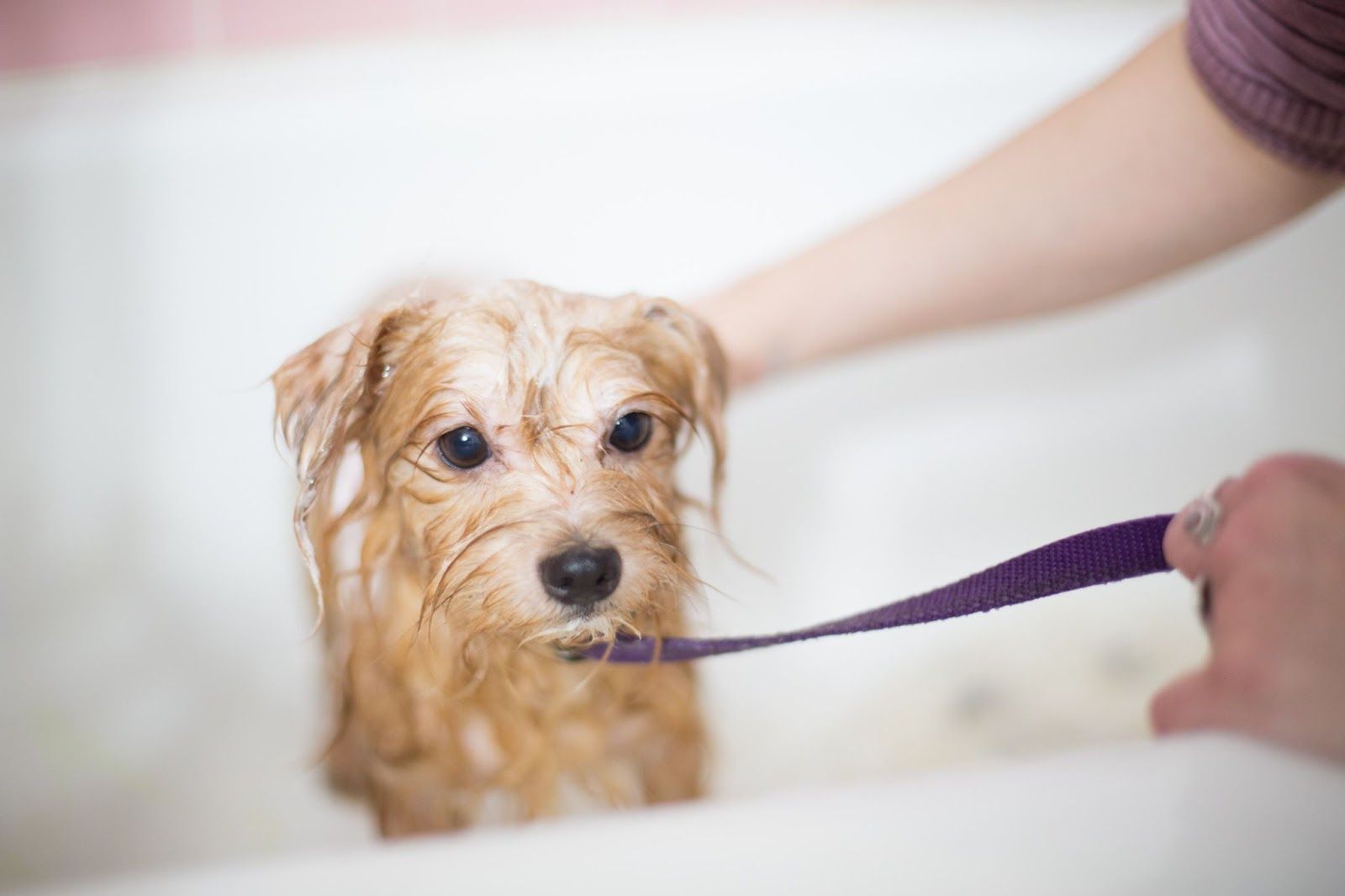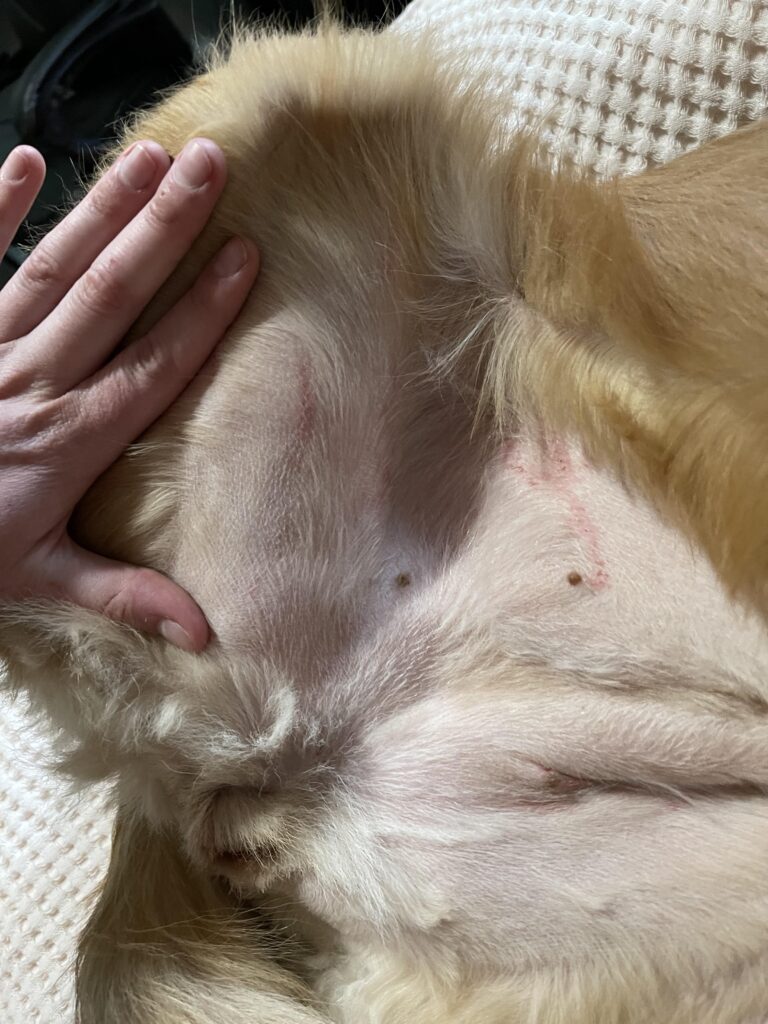After grooming, your dog may be sitting on his bum due to discomfort from the grooming process or an issue with his anal glands. It’s important to observe if he is exhibiting other signs of discomfort or if there are any visible abnormalities in the area.
This behavior could also indicate a problem with his anal sacs, such as impaction or infection. It’s best to consult with a veterinarian to determine the underlying cause and provide appropriate treatment for your dog’s comfort and well-being. When a dog displays unusual behavior, such as sitting on his bum excessively after grooming, it can be concerning for pet owners.
We will explore the possible reasons for this behavior, including discomfort from grooming, anal gland issues, and potential health issues. Understanding these factors can help you address your dog’s needs and ensure his overall health and happiness.
Credit: www.quora.com
Possible Reasons
After grooming, your dog may sit on his bum due to discomfort from a sensitive or irritated area. It could also be a sign of anal sac problems, such as impaction or infection.
If your dog keeps sitting on his bum after grooming, one possible reason could be anal gland issues. Dogs have anal glands located near their rectum that produce a smelly, oily substance. These glands usually empty naturally when a dog has a bowel movement, but sometimes they can become impacted or infected. When this happens, your dog may experience discomfort or itchiness around the area, leading to the behavior of sitting on his bum frequently. Another possible reason for your dog’s behavior could be skin irritation. Grooming products such as shampoos, conditioners, or even the grooming process itself can cause skin irritation in some dogs. This can result in itchiness, redness, or inflammation, making your dog uncomfortable. Sitting on his bum might provide temporary relief from the irritation. It’s important to check for any signs of rashes or dry skin and consult with a veterinarian if needed. The grooming process itself can sometimes cause discomfort for dogs. If your dog dislikes being groomed or is anxious during the process, he may associate the feeling of discomfort with sitting on his bum. This could be his way of relieving stress or seeking comfort. It’s essential to make grooming a positive experience for your dog by using gentle handling techniques, rewarding him with treats or praise, and ensuring a calm environment. Overall, there can be several possible reasons why your dog keeps sitting on his bum after grooming. Anal gland issues, skin irritation, or discomfort from the grooming process could all be contributing factors. If your dog’s behavior persists or if you notice any other concerning symptoms, it’s always best to consult with a veterinarian for a proper diagnosis and advice on how to address the issue.Anal Gland Issues
Anal gland issues can be a common concern for dog owners, often causing discomfort for their furry companions. It’s not uncommon for dogs to exhibit unusual behavior after grooming, such as incessant sitting on their bum. This could be a sign of anal gland problems, a condition that requires attention and proper care to ensure your dog’s well-being.
Importance Of Anal Glands
Anal glands, also known as anal sacs, are small glands located on either side of a dog’s anus. These glands play a crucial role in communication and marking territory, as well as lubricating the stool during bowel movements. The anal glands normally empty when a dog defecates, but sometimes they can become impacted or infected, leading to various issues.
Signs Of Anal Gland Problems
- Excessive licking or biting of the anal area
- Scooting or dragging the rear on the ground
- Foul odor emanating from the rear end
- Visible swelling or redness around the anus
Possible Treatments
When dealing with anal gland problems, it’s crucial to consult a veterinarian for proper diagnosis and treatment. The vet may manually express the anal glands or prescribe medications to alleviate inflammation or infection. In severe cases, surgery may be necessary to address chronic issues.
Skin Irritation
Dogs are often prone to skin irritation, which can be exacerbated after grooming. If you’ve noticed that your dog keeps sitting on his bum after grooming, it could be a sign of skin irritation. Skin irritation in dogs can be caused by various reasons and it’s important to be aware of the symptoms and steps to relieve it. Let’s explore the causes, symptoms, and steps to relieve skin irritation in dogs after grooming.
Causes Of Skin Irritation
Several factors can contribute to skin irritation in dogs after grooming. The most common causes include chemical irritation from grooming products, allergic reactions to shampoos or conditioners, and friction from grooming tools. Additionally, underlying skin infections or parasites such as fleas or ticks can also lead to skin irritation in dogs.
Symptoms Of Skin Irritation
It’s essential to recognize the symptoms of skin irritation in dogs after grooming. Excessive scratching and biting at the skin, redness or inflammation, hair loss, and foul odor are common signs of skin irritation. Additionally, if your dog is sitting on his bum frequently or showing discomfort when touched in certain areas, it may indicate skin irritation after grooming.
Steps To Relieve Skin Irritation
Relieving skin irritation in dogs after grooming involves several steps. First, thoroughly rinse all grooming products from your dog’s coat to remove any potential irritants. Consider using hypoallergenic grooming products to minimize the risk of allergic reactions. Regular brushing can help reduce friction and distribute natural oils, promoting healthier skin. Additionally, consult with your veterinarian to address any underlying infections or parasites and explore potential dietary changes that can improve skin health.
Discomfort From Grooming Process
It is not uncommon for dogs to exhibit discomfort after a grooming session, particularly if they tend to sit on their bums. There could be several potential causes for this behavior, and understanding them can help you minimize your furry friend’s discomfort. By taking appropriate measures and seeking professional grooming help when necessary, you can ensure your dog’s grooming experience is as comfortable as possible. Let’s explore the potential causes of discomfort, how to minimize it, and when it may be necessary to seek professional grooming assistance.
Potential Causes Of Discomfort
During the grooming process, certain factors can contribute to your dog’s discomfort. These causes may include:
- Tight or poorly fitted grooming accessories, such as collars or harnesses
- Excessive or rough handling by the groomer
- Trimming or shaving too close to the skin, resulting in irritation
- Accidentally nicking the skin with grooming tools
- Presence of underlying skin conditions, such as allergies or parasites
How To Minimize Discomfort
To help alleviate your dog’s discomfort after grooming, consider these measures:
- Ensure your dog’s grooming accessories, such as collars or harnesses, fit properly and are not too tight.
- Choose a groomer who has experience and is gentle with dogs.
- Request your groomer to use caution when trimming or shaving close to the skin to avoid irritation.
- Regularly inspect your dog’s skin for any signs of redness, irritation, or sores.
- Keep your dog’s grooming sessions short and provide plenty of breaks.
- Use grooming tools appropriate for your dog’s breed and coat type to minimize the risk of injury.
Seeking Professional Grooming Help
If your dog continues to experience discomfort or sits on their bum persistently after grooming, it is advisable to seek professional grooming help. A professional groomer can assess your dog’s condition, identify any underlying issues, and provide appropriate treatment if needed. They will have the expertise to handle your dog with care and ensure a comfortable grooming experience.
Preventing Future Occurrences
After noticing that your dog keeps sitting on his bum after grooming, it’s important to take preventive measures to avoid future occurrences and ensure your furry friend’s comfort and well-being. By addressing the potential underlying causes and implementing the following practices, you can minimize discomfort and promote a happy, healthy dog.
Regular Anal Gland Expression
Schedule regular anal gland expression sessions for your dog to prevent any discomfort or irritation. Anal glands are small sacs located on either side of the rectum that can become blocked or infected, leading to pain and scooting behavior. Regular expression by a professional groomer or veterinarian ensures proper emptying of these glands, reducing the likelihood of your dog experiencing discomfort and sitting on his bum.
Gentle And Soothing Grooming Techniques
When grooming your dog, use gentle and soothing techniques to keep him calm and comfortable. Avoid using harsh brushes or pulling on matted fur, as this can cause pain and irritation. Instead, opt for soft brushes or groom your dog using your hands. This approach not only prevents your dog from developing an aversion to grooming but also reduces the likelihood of him sitting on his bum in discomfort afterwards.
Proper Skincare And Maintenance
To prevent future instances of your dog sitting on his bum after grooming, proper skincare and maintenance are essential. Regularly check for any signs of irritation, redness, or dryness on your dog’s skin. Use gentle shampoos and conditioners specifically formulated for dogs, avoiding any harsh chemicals that might cause skin sensitivities. Additionally, keep your dog’s coat well-groomed and free from mats or tangles, as these can lead to discomfort and encourage sitting on his bum.
Moreover, ensure that you maintain a hygienic grooming environment to prevent infections or irritations. Clean your grooming tools regularly and consider using antibacterial wipes or sprays to sanitize them. Regularly wash your dog’s bedding to avoid any allergens or irritants that could contribute to discomfort or itching.
By implementing these preventative measures, you can create a grooming routine that keeps your dog happy, healthy, and free from any discomfort that might cause him to sit on his bum after grooming sessions.

Credit: pethelpful.com

Credit: blog.tryfi.com
Frequently Asked Questions On My Dog Keeps Sitting On His Bum After Grooming
Why Does My Dog Sit On His Bum After Grooming?
After grooming, dogs may feel a bit sensitive or discomfort around their rear end. Sitting on their bum helps alleviate the discomfort from grooming, particularly if the hair around that area has been trimmed or clipped. It is normal behavior and should subside within a day or two.
Should I Be Concerned If My Dog Sits On His Bum After Grooming?
In most cases, there is no need to be concerned if your dog sits on his bum after grooming. It’s a natural response to any discomfort or sensitivity they may be experiencing. However, if your dog’s behavior persists for an extended period of time or is accompanied by other concerning symptoms, it is best to consult with your veterinarian.
How Can I Help My Dog If He Sits On His Bum After Grooming?
To help your dog feel more comfortable after grooming, you can try providing a soft cushion or blanket for them to sit on. Avoid touching or handling the area that may be causing discomfort. If the behavior persists or your dog seems particularly uncomfortable, it’s best to seek advice from a professional groomer or veterinarian.
Conclusion
To sum it up, if your dog keeps sitting on his bum after grooming, it could be due to a few reasons. It may indicate discomfort or irritation in the anal area caused by grooming techniques or underlying health issues.
Regularly monitoring your dog’s behavior and consulting with a veterinarian can help ensure their well-being and address any potential concerns. Remember, your furry friend’s comfort and happiness should always be a priority.



